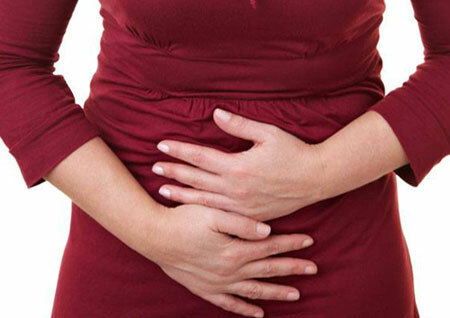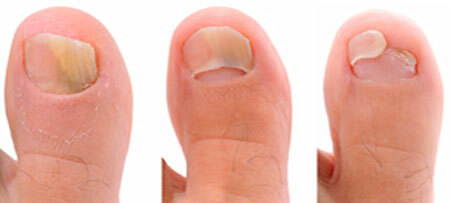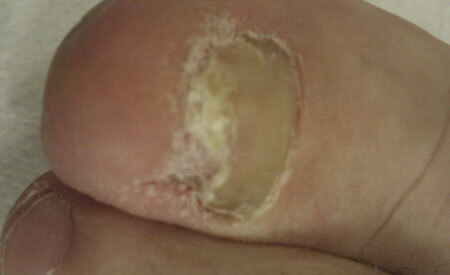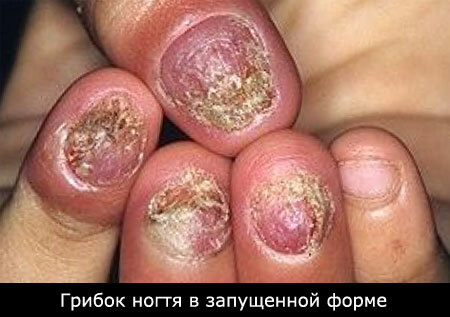Candidiasis is a disease caused by the multiplication in the human body of fungal unicellular microorganisms of the genus Candida. They are called conditionally pathogenic, because they are found in the digestive tract, even in absolutely healthy people.
Candida neighbors with saprophytic bacteria, mutually controlling the quantitative composition of both types of microorganisms - a mobile balance is reached, which is beneficial to man.
Contents
- 1 Causes of intestinal candidiasis
- 2 Symptoms of intestinal candidiasis
- 3 Treatment of intestinal candidiasis
- 4 Diet for intestinal candidiasis
- 5 Treatment of folk intestinal candidiasis
- 6 Prevention of intestinal candidiasis
Causes of bowel candidiasis

For the emergence of intestinal candidiasis, a change in the balance of microflora is a prerequisite. In the overwhelming majority of cases, this happens after human intervention in the natural processes of intestinal regulation.
The main factor in the development of candidiasis is the uncontrolled use of antibiotics. They are considered a panacea for all ills with health, taking even with a headache. Antibiotics suppress bacterial flora, with fungal strains beginning to spread unimpeded, causing damage to the mucous membranes. The process covers the oral cavity, the intestines, the urogenital sphere.
Fungi of the genus Candida are the first infection with which infants are encountered by children, receiving it, or during progress through the birth canal of the mother or through the pacifier, which caring adults lick, "clearing" before giving it to the child.
The so-called "thrush" develops, which first appears in the form of white films in the mouth, and then causes candidiasis of the intestine in children.
Decreased immunity during antitumor therapy, organ transplantation, as a result of prolonged illness, stress, AIDS, endocrine diseases and digestive disorders, creates conditions for the emergence of dysbacteriosis and candidiasis of the intestine.
- Non-invasive form of of intestinal candidiasis is one of the manifestations of dysbacteriosis - in the lumen of the intestine the colonies of the fungus multiply, causing digestion disorders and intoxication of the body with the products of their vital activity. The intestinal wall suffers insignificantly.
- In the invasive form of , the mycelium of Candida fungus grows into the intestinal mucosa. Develops generalized intestinal candidiasis or focal - in the form of separate lesions.
Symptoms of intestinal candidiasis
The first symptoms of intestinal candidiasis can be manifested in the form of increased fatigue, decreased appetite and a feeling of heaviness in the abdomen. Characteristic of hypovitaminosis.
Symptoms of non-invasive candidiasis manifests itself as an unstable chair with alternating diarrhea and constipation, flatulence and a feeling of discomfort in the abdomen - all of its clinic coincides with dysbiosis.
White flakes may appear in the feces, and dehydration gradually develops.
The invasive generalized form of gives a picture of ulcerative colitis: spasmodic pains, mucus and blood feces, flatulence, subfebrile temperature. When localized in the rectum, there may be false urges and pain during defecation.
Invasive form is dangerous for possible complications: perforation of the intestinal wall, development of peritonitis and sepsis. In neglected cases, there may be general exhaustion and anemia.
It is difficult to diagnose fungal infection due to the constant presence of Candida fungus in the body. Candidiasis of the intestine is determined by conducting laboratory tests.
- The causative agent is revealed by the study of feces and the sowing of the material on nutrient media. A smear from the location of the colony of fungi is studied under a microscope in order to detect the filaments of the fungal mycelium.
- Immunoenzymatic analysis confirms the association of the Candida fungus with the symptoms of the disease.
- Colonoscopy helps to identify the invasive form of the disease in the rectum.
Treatment of intestinal candidiasis

The treatment regimen for intestinal candidiasis is determined based on diagnostic tests. After laboratory determination of the sensitivity of the pathogen to antimycotic drugs, the most effective means for each specific case are selected.
Preference is given to local medications( pimafucin), which are not absorbed into the blood, creating the right concentration in the lumen of the intestine. Medications are administered orally or in the form of rectal suppositories.
In the scheme of treatment of candidiasis of the intestine, an important place is occupied by correction of immunity to increase the resistance of the fungal infection organism.
Another task is to restore a healthy level of intestinal microflora both by medicines and by choosing the right diet.
Diet for candidiasis of the intestine
When identifying candidiasis of the intestine, you must pay attention to the daily diet. To restore the balance of microflora in the intestine, it is necessary to create conditions for the reproduction of saprophyte bacteria there. The basis of their nutrition is fiber, and therefore, it is necessary:
- regularly in sufficient quantities to consume fruits and vegetables;
- to abandon white bread and baked pastries, switch to bread of coarse grinding;
- as often as possible to use freshly prepared( not canned) vegetable juices;
- restrict to a minimum in the diet sugar and confectionery;
- to refrain from overeating;
- daily take dairy products, and they should be natural without pasteurization and preservatives for long-term storage.
Treatment with folk remedies for intestinal candidiasis
Traditionally, with problems with the intestines, folk medicine advises the use of decoctions of such astringents as bark of oak, cherry, pomegranate or plants with anti-inflammatory properties - chamomile, calendula.
Can alleviate the state of the intestines and improve the bacterial flora in it by regular intake of curdled milk, real bread kvass or a drink from the tea fungus.
For the improvement of intestinal epithelialization, the practice of carrot juice containing a large amount of vitamin A, which promotes the healing of integuments, is practiced. But we must bear in mind that vitamin A is absorbed only when there is fat or oil, so carrot juice in such a situation will be more useful as a fiber supplier.
Folk remedies can not be a full-fledged substitute for drug treatment with such a serious problem.
Prevention of intestinal candidiasis
In addition to organizing a healthy diet with regular intake of prebiotics - nutrients that promote the development of normal microflora, it is necessary to monitor the state of immunity, supporting it with polyvitamins in the autumn and winter period and with colds.
Adherence to a healthy lifestyle, sports, tempering and a sensible day regimen will help to avoid stresses that adversely affect immunity.
And, of course, - taking antibiotics only for the intended purpose and under the supervision of a doctor!



